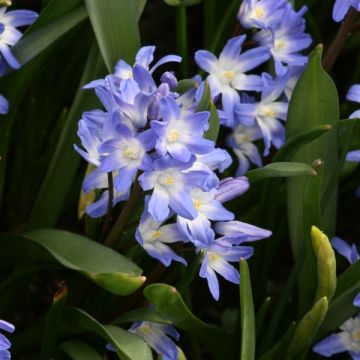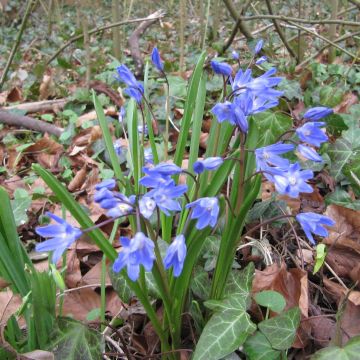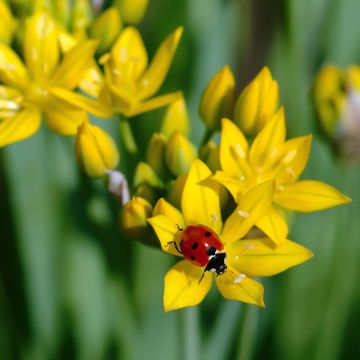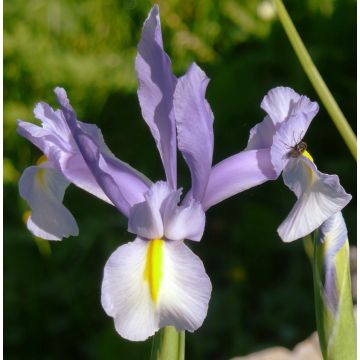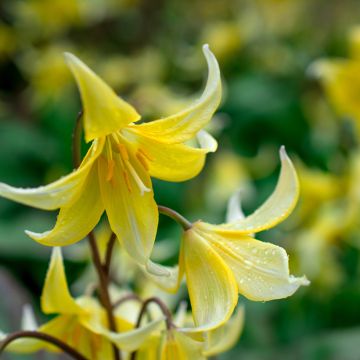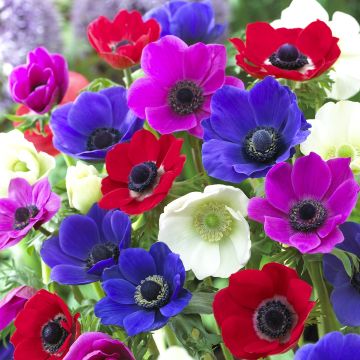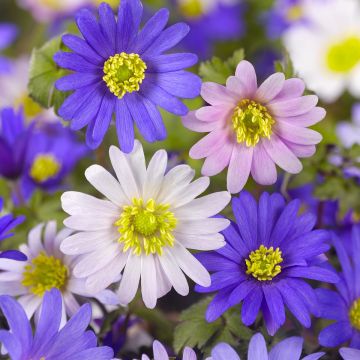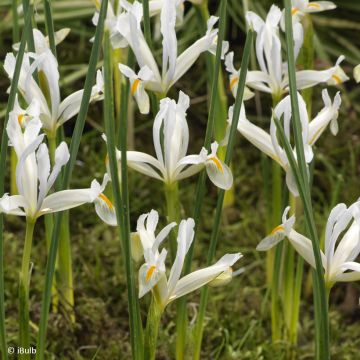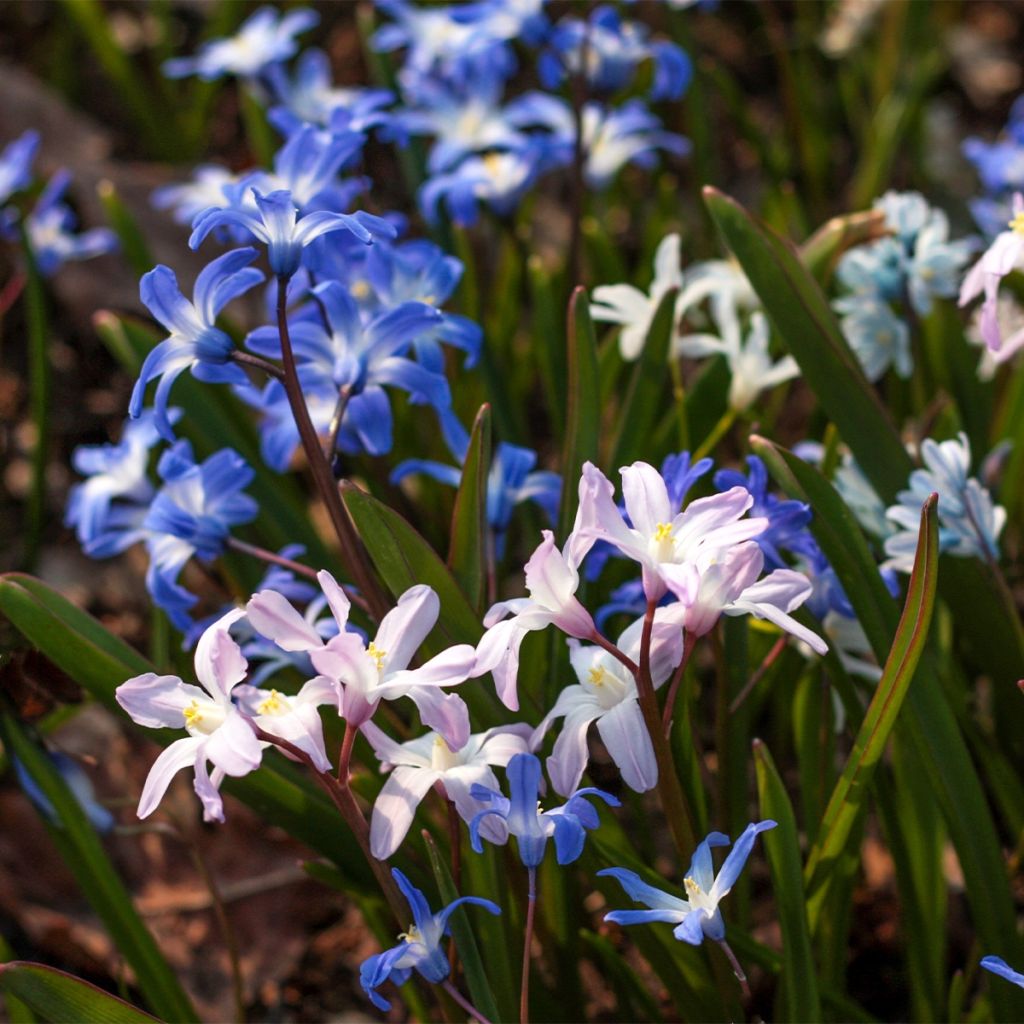

Chionodoxa en mélange - Gloire des Neiges
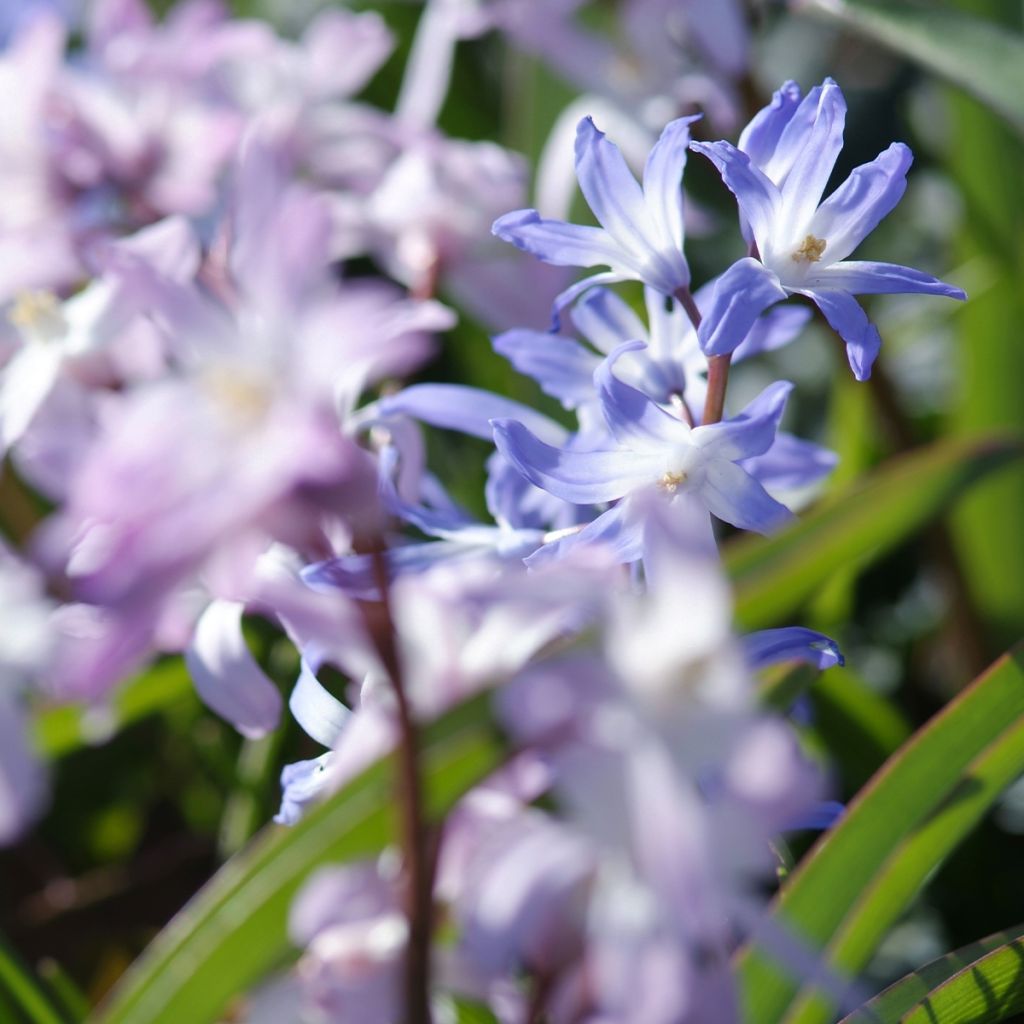

Chionodoxa en mélange - Gloire des Neiges
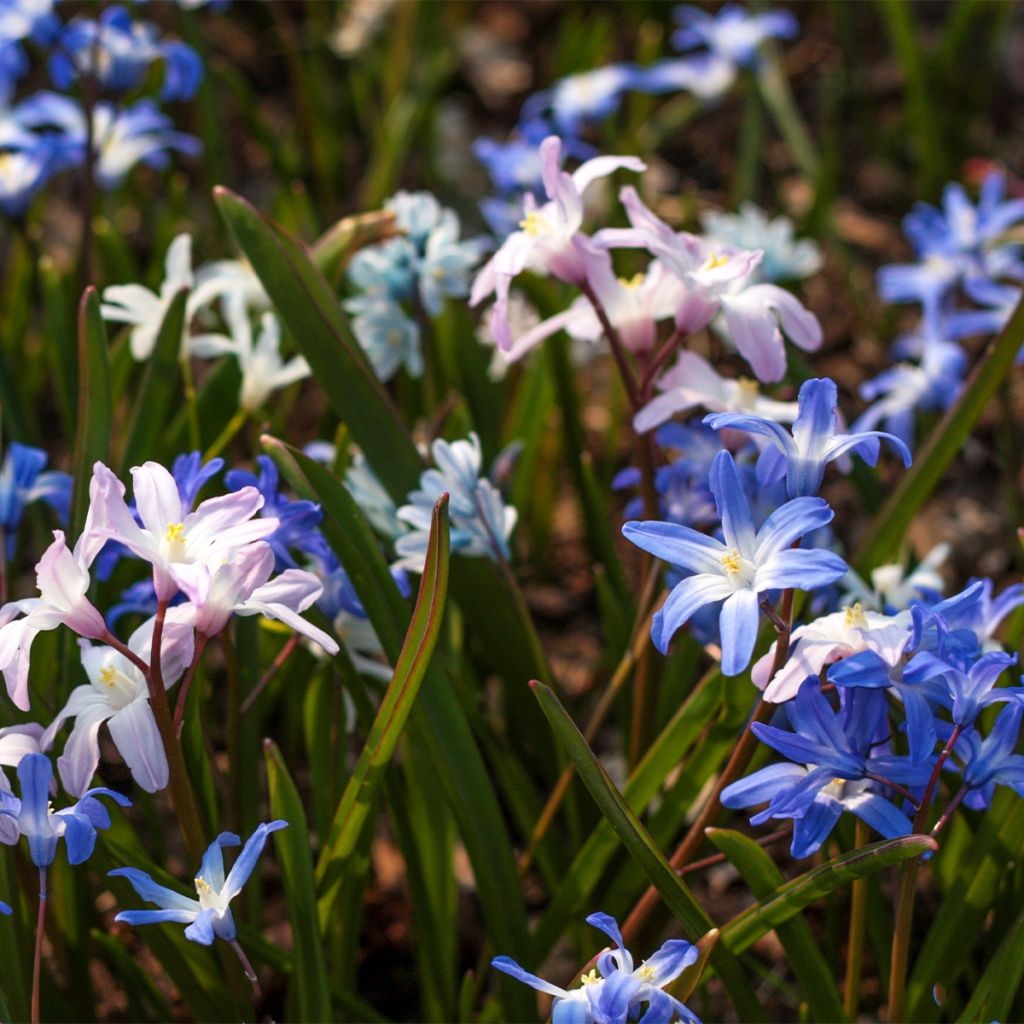

Chionodoxa en mélange - Gloire des Neiges
Chionodoxa forbesii Mix
Chionodoxa forbesii Mix
Glory-of-the-snow, Squill
Special offer!
Receive a €20 voucher for any order over €90 (excluding delivery costs, credit notes, and plastic-free options)!
1- Add your favorite plants to your cart.
2- Once you have reached €90, confirm your order (you can even choose the delivery date!).
3- As soon as your order is shipped, you will receive an email containing your voucher code, valid for 3 months (90 days).
Your voucher is unique and can only be used once, for any order with a minimum value of €20, excluding delivery costs.
Can be combined with other current offers, non-divisible and non-refundable.
Why not try an alternative variety in stock?
View all →This plant carries a 6 months recovery warranty
More information
We guarantee the quality of our plants for a full growing cycle, and will replace at our expense any plant that fails to recover under normal climatic and planting conditions.
Would this plant suit my garden?
Set up your Plantfit profile →
Description
This mix of Chionodoxa forbesii brings together variously coloured flowering forms of a small bulbous plant poetically called Glory of the Snow, due to its early and bright spring flowering. Each plant offers charming little star-shaped flowers, from early spring. It naturalises easily under trees, at the base of bushes, or even in flower pots, forming over time abundant multicoloured colonies, mixing white, blue, purple, pink, or light purple. Superb among daffodils and botanical tulips!
Chionodoxa forbesii is sometimes called Chionodoxa luciliae hort. Endemic to the mountains of southwestern Turkey, at altitudes above 2500 m (8202ft), this small perennial bulbous plant of the Hyacinthaceae family is a close relative of hyacinths. The small bulbs produce small clumps that reach 10-15 cm (4-6in) in height when flowering, spreading without theoretical limit thanks to the production of numerous bulblets, eventually forming beautiful bright carpets. In February-March-April, depending on the climate, its little stars celebrate for two weeks the departure of the last snow. From a bulb, one or two purplish stems will grow, carrying 3 to 10 small flowers with 6 petals of various colours depending on the plants, with a white base. Its foliage is ribbon-like, dark green, sometimes tinged with purple at the tip. It dries up from May-June, indicating that the plant enters a resting phase to escape the rigours of summer.
Chionodoxa forbesii was once a very popular plant, somewhat neglected in recent years. However, it is a flawless plant, easy to grow in cool or alpine climates, very hardy and welcome after winter. Its bright flowers spread out in flowering carpets in the company of hepaticas, hyacinths, grape hyacinths, and botanical tulips. It will naturalise in sunny rockeries, but also under deciduous trees and bushes, in semi-shade. It is advisable to plant it close to borders, due to its low height. Chionodoxas are also very interesting for use in pots.
Report an error about the product description
Chionodoxa forbesii Mix in pictures
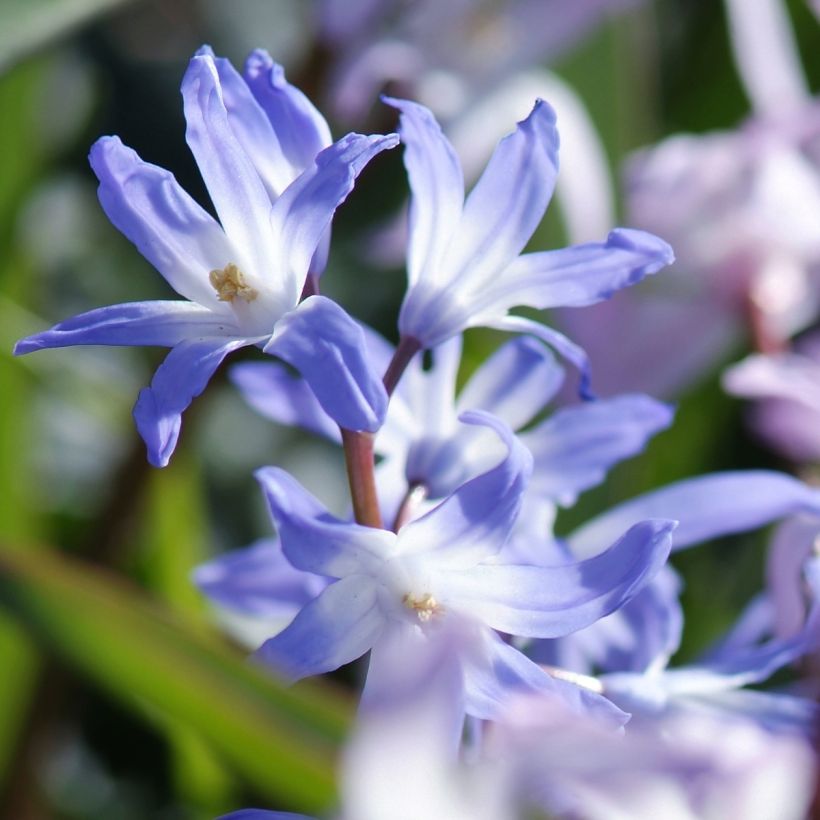

Plant habit
Flowering
Foliage
Botanical data
Chionodoxa
forbesii
Mix
Hyacinthaceae
Glory-of-the-snow, Squill
Cultivar or hybrid
Other Chionodoxa
View all →Planting and care
Plant the small Chionodoxa bulbs in a mixture of September to November at a depth of about 5 cm (2in) and a spacing of 10 or 12 cm (4 or 5in). You must leave the bulbs in place for several years: clumps of the most brilliant effect will form. Chionodoxa can be forced indoors like Crocuses.
Chionodoxa will thrive in a sunny or semi-shaded exposure. While it accepts any ordinary soil, it should still be loose, permeable, and moist. The bulbs should not be completely dry during the summer. This small bulbous plant withers in excessively hot climates.
Pot cultivation: Plant the bulbs in a mixture of good garden soil, potting soil, and a little coarse sand. Make sure not to let the soil in the pots dry out in the summer.
Planting period
Intended location
Care
This item has not been reviewed yet - be the first to leave a review about it.
Similar products
Haven't found what you were looking for?
Hardiness is the lowest winter temperature a plant can endure without suffering serious damage or even dying. However, hardiness is affected by location (a sheltered area, such as a patio), protection (winter cover) and soil type (hardiness is improved by well-drained soil).

Photo Sharing Terms & Conditions
In order to encourage gardeners to interact and share their experiences, Promesse de fleurs offers various media enabling content to be uploaded onto its Site - in particular via the ‘Photo sharing’ module.
The User agrees to refrain from:
- Posting any content that is illegal, prejudicial, insulting, racist, inciteful to hatred, revisionist, contrary to public decency, that infringes on privacy or on the privacy rights of third parties, in particular the publicity rights of persons and goods, intellectual property rights, or the right to privacy.
- Submitting content on behalf of a third party;
- Impersonate the identity of a third party and/or publish any personal information about a third party;
In general, the User undertakes to refrain from any unethical behaviour.
All Content (in particular text, comments, files, images, photos, videos, creative works, etc.), which may be subject to property or intellectual property rights, image or other private rights, shall remain the property of the User, subject to the limited rights granted by the terms of the licence granted by Promesse de fleurs as stated below. Users are at liberty to publish or not to publish such Content on the Site, notably via the ‘Photo Sharing’ facility, and accept that this Content shall be made public and freely accessible, notably on the Internet.
Users further acknowledge, undertake to have ,and guarantee that they hold all necessary rights and permissions to publish such material on the Site, in particular with regard to the legislation in force pertaining to any privacy, property, intellectual property, image, or contractual rights, or rights of any other nature. By publishing such Content on the Site, Users acknowledge accepting full liability as publishers of the Content within the meaning of the law, and grant Promesse de fleurs, free of charge, an inclusive, worldwide licence for the said Content for the entire duration of its publication, including all reproduction, representation, up/downloading, displaying, performing, transmission, and storage rights.
Users also grant permission for their name to be linked to the Content and accept that this link may not always be made available.
By engaging in posting material, Users consent to their Content becoming automatically accessible on the Internet, in particular on other sites and/or blogs and/or web pages of the Promesse de fleurs site, including in particular social pages and the Promesse de fleurs catalogue.
Users may secure the removal of entrusted content free of charge by issuing a simple request via our contact form.
The flowering period indicated on our website applies to countries and regions located in USDA zone 8 (France, the United Kingdom, Ireland, the Netherlands, etc.)
It will vary according to where you live:
- In zones 9 to 10 (Italy, Spain, Greece, etc.), flowering will occur about 2 to 4 weeks earlier.
- In zones 6 to 7 (Germany, Poland, Slovenia, and lower mountainous regions), flowering will be delayed by 2 to 3 weeks.
- In zone 5 (Central Europe, Scandinavia), blooming will be delayed by 3 to 5 weeks.
In temperate climates, pruning of spring-flowering shrubs (forsythia, spireas, etc.) should be done just after flowering.
Pruning of summer-flowering shrubs (Indian Lilac, Perovskia, etc.) can be done in winter or spring.
In cold regions as well as with frost-sensitive plants, avoid pruning too early when severe frosts may still occur.
The planting period indicated on our website applies to countries and regions located in USDA zone 8 (France, United Kingdom, Ireland, Netherlands).
It will vary according to where you live:
- In Mediterranean zones (Marseille, Madrid, Milan, etc.), autumn and winter are the best planting periods.
- In continental zones (Strasbourg, Munich, Vienna, etc.), delay planting by 2 to 3 weeks in spring and bring it forward by 2 to 4 weeks in autumn.
- In mountainous regions (the Alps, Pyrenees, Carpathians, etc.), it is best to plant in late spring (May-June) or late summer (August-September).
The harvesting period indicated on our website applies to countries and regions in USDA zone 8 (France, England, Ireland, the Netherlands).
In colder areas (Scandinavia, Poland, Austria...) fruit and vegetable harvests are likely to be delayed by 3-4 weeks.
In warmer areas (Italy, Spain, Greece, etc.), harvesting will probably take place earlier, depending on weather conditions.
The sowing periods indicated on our website apply to countries and regions within USDA Zone 8 (France, UK, Ireland, Netherlands).
In colder areas (Scandinavia, Poland, Austria...), delay any outdoor sowing by 3-4 weeks, or sow under glass.
In warmer climes (Italy, Spain, Greece, etc.), bring outdoor sowing forward by a few weeks.































